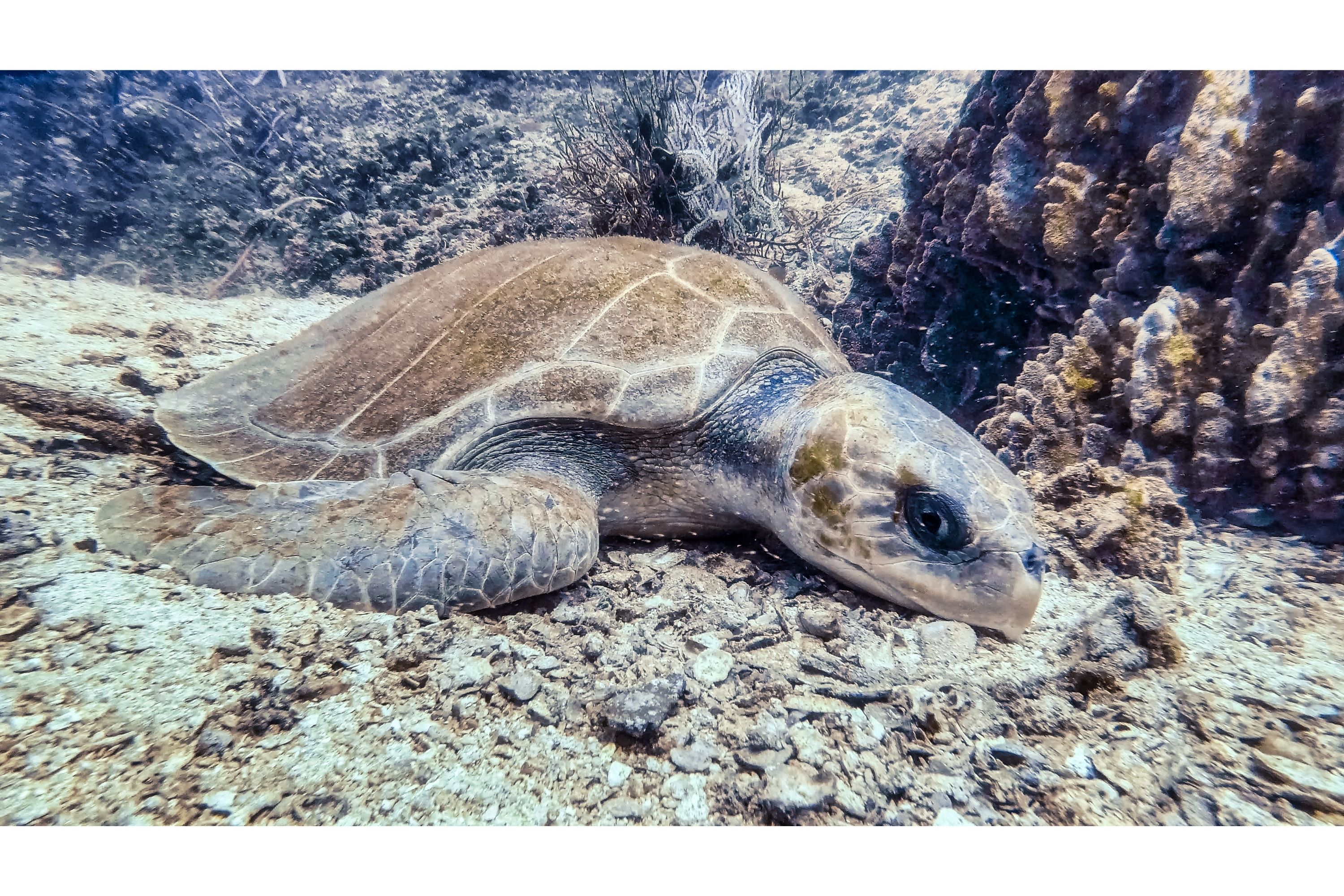Olive ridley sea turtle
(Lepidochelys olivacea)

Description
The olive ridley sea turtle (Lepidochelys olivacea), also known commonly as the Pacific ridley sea turtle, is a species of turtle in the family Cheloniidae. The species is the second-smallest and most abundant of all sea turtles found in the world. L. olivacea is found in warm and tropical waters, primarily in the Pacific and Indian Oceans, but also in the warm waters of the Atlantic Ocean. This turtle and the related Kemp's ridley turtle are best known for their unique synchronised mass nestings called arribadas, where thousands of females come together on the same beach to lay eggs. Growing to about 61 cm (2 ft) in carapace length (measured along the curve), the olive ridley sea turtle gets its common name from its olive-colored carapace, which is heart-shaped and rounded. Males and females grow to the same size, but females have a slightly more rounded carapace as compared to males. The heart-shaped carapace is characterized by four pairs of pore-bearing inframarginal scutes on the bridge, two pairs of prefrontals, and up to nine lateral scutes per side. L. olivacea is unique in that it can have variable and asymmetrical lateral scute counts, ranging from five to nine plates on each side, with six to eight being most commonly observed. Each side of the carapace has 12–14 marginal scutes. The carapace is flattened dorsally and highest anterior to the bridge. it has a medium-sized, broad head that appears triangular from above. The head's concave sides are most obvious on the upper part of the short snout. It has paddle-like fore limbs, each having two anterior claws. The upper parts are grayish-green to olive in color, but sometimes appear reddish due to algae growing on the carapace. The bridge and hingeless plastron of an adult vary from greenish white in younger individuals to a creamy yellow in older specimens (maximum age is up to 50 years). Hatchlings are dark gray with a pale yolk scar, but appear all black when wet. Carapace length of hatchlings ranges from 37 to 50 mm (1.5 to 2.0 in). A thin, white line borders the carapace, as well as the trailing edge of the fore and hind flippers. Both hatchlings and juveniles have serrated posterior marginal scutes, which become smooth with age. Juveniles also have three dorsal keels; the central longitudinal keel gives younger turtles a serrated profile, which remains until sexual maturity is reached.
Taxonomic tree:







